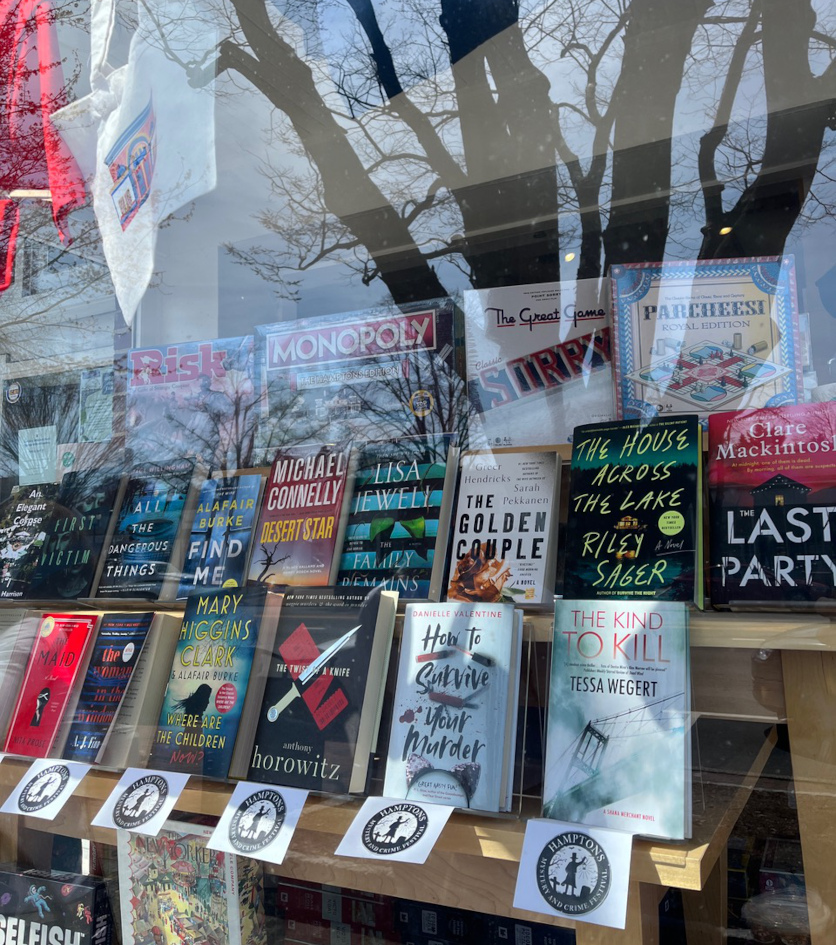Tessa Wegert is the author of the popular Shana Merchant mysteries, which include Death in the Family, The Dead Season, Dead Wind, The Kind to Kill, and the upcoming Devils at the Door (12/5/23). A former freelance journalist, Tessa has contributed to such publications as Forbes, The Huffington Post, Adweek, The Economist, and The Globe and Mail. She grew up in Quebec and now lives with her husband and children in Connecticut, where she studies martial arts and is co-president of Sisters in Crime CT.
Could you tell us briefly what your latest book, The Kind to Kill (Shana Merchant #4), is about?
Tessa Wegert: The Kind to Kill follows New York State Senior Investigator Shana Merchant as she works to locate a tourist who’s gone missing from the Thousand Islands’ annual Pirate Days street fest. When Shana discovers a string of crimes eerily similar to those she investigated in the past, she begins to suspect a copycat killer and a link to her own family.
When writing the Shana Merchant series, how do you keep things fresh, for both your readers and yourself?
TW: I often ask myself the same thing! Writing a series requires that I revisit many of the same characters and settings from book to book, but Shana’s personal life and mental state vary dramatically from one story to the next, which I do think helps to keep things fresh. I also make a point of pulling side characters from previous novels and working them into new plots to expand the reader’s perspective on Shana’s world—which is full of dubious personalities, of course.
Your Shana Merchant mysteries transport readers to the Thousand Islands region of Upstate New York. The island community has a small-town vibe that is at once claustrophobic and connected, providing an atmospheric setting for your thrillers. In real life, what’s your favourite place to visit and why?
TW: Honestly, the Thousand Islands is high on the list! I’ve been a diehard summer visitor for twenty years, which is why I chose to set the series among the islands—both in Ontario and New York State. Every time I go back, I discover another fascinating historical fact or stumble onto a place I want to incorporate into my next novel. When I’m not in that area, though, I love visiting Montreal, where I lived for many years prior to moving to the U.S.
When plotting a crime, where do you get your inspiration?
Most of the crimes I dream up start with a vision of the crime scene itself. With Dead Wind, for example, I had spent time on Wolfe Island on a day when a storm was rolling in, and was struck by the cinematic views of the massive wind turbines among vibrant green fields of corn and soybeans. Once I had an idea of where the murder victim would be discovered, I worked backward to identify them, the suspects, and of course, the motive. The finer details of the crime and investigation tend to come later in the writing process as I dig into my research on police procedure. At the beginning, it’s all about setting and getting to know the newer characters I’ve thrown into the mix.
In The Dead Season (#2), Shana studies martial arts to process trauma. How does your own knowledge of martial arts help you to weave emotion into fight scenes?
TW: Making Shana a martial artist was pretty self-serving… she needed a pastime, and I already had some knowledge of karate due to my own experience. I do think drawing on that helps to build emotion and tension, simply because the sensation of sparring with someone is familiar to me. I actually doubled up on martial arts classes while writing The Dead Season so I could spend more time replicating the kinds of moments and altercations Shana faces on the page.
Does one of your characters hold a special place in your heart? If so, why?
TW: A lot of readers tell me they favor Tim Wellington, Shana’s State Police partner turned romantic interest, and I agree that he’s a pretty appealing guy. I think I’m drawn to his unflappable and pragmatic nature because I tend to be alarmist—not unlike Shana herself—and Tim’s a calming counterbalance to my paranoia.
While writing The Kind to Kill, what was the most surprising thing you discovered or learned?
TW: I actually made a pretty major discovery while writing the fourth Shana mystery, which was that changing up the identity of the killer along the way serves me well. I was certain I knew “whodunit,” but during the revision process I started to worry that the crime was too predictable. I had set up several characters as credible suspects, so swapping in a new killer was a relatively easy task. Now, I go into every book expecting to make a similar change. Turns out that surprising myself helps me surprise the reader, too.
What a great strategy! I haven’t had the courage to make such a major change during revision yet. I love the idea that swapping in a new killer ups the element of surprise for you and for readers.
If you could give just one piece of advice to aspiring writers, what would it be?
TW: Oh, I would definitely encourage all writers to join a writing community (or several) prior to being published. Organizations like Sisters in Crime, International Thriller Writers, and Mystery Writers of America can help connect aspiring authors with other writers at various stages of their careers, which is invaluable for everything from professional networking to building lasting friendships. There’s no business quite like this one, but writing communities are full of people who understand our unique challenges and victories. There’s just no substitute for a supportive community of creatives.
Thank you for taking the time to answer my questions!
TW: Thank you, Vanessa! This was fun!



Here’s a sneak peak at The Kind to Kill…
It was on the eighth day that I decided to kill him.
Eight days spent largely in darkness, the hours not ticking by so much as unspooling like an upstate highway, no end in sight. All the while, I listened to him talk about his difficult childhood and the bad luck he had to endure. The fatherless home, the mother’s paralyzing anxiety, how it all deprived him of the skills and tools he needed to connect with other kids. He never once mentioned the three women he’d abducted and murdered before taking me, or the others before them. Their luck didn’t concern him.
I knew who he was by then, not just that he was the suspect I’d been hunting with the NYPD, but that we had history. All week long, I’d been waiting for the moment when he’d show up not with the cheap takeout needed to keep me alive for some purpose I couldn’t divine, but with the knife he’d used on those other women. Because history or not, this man was a killer.
Visit Tessa Wegert on social media!

About Vanessa Westermann
Vanessa writes feel-good romantic mysteries. She is the author of Cover Art and other books.

